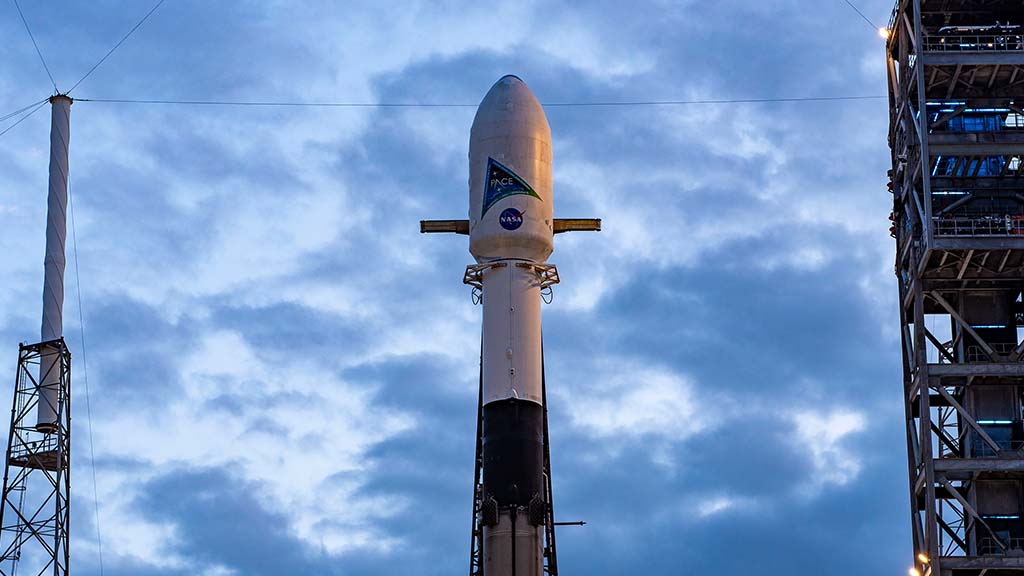SpaceX
SpaceX delays NASA PACE launch and AX-3 Space Station departure due to weather conditions

SpaceX and NASA today confirmed another delay in the launch of the PACE mission due to unfavorable weather conditions. The rocket company has already moved away from an earlier day for Dragon spacecraft carrying the AX-3 crew from the Space Station.
SpaceX said it is standing from the Wednesday, February 7th launch of the PACE mission due to ground winds preventing prelaunch checkouts. NASA and SpaceX are now looking for a launch opportunity at 1:33 a.m. EST Thursday, February 8.
The Falcon 9 rocket and the payload are standing vertical at Space Launch Complex 40 at Cape Canaveral Space Force Station in Florida. The flight has been standing there since February 5th but the payload and the rocket are healthy for launch.
Plankton, Aerosol, Cloud, Ocean Ecosystem (PACE) is NASA’s new earth-observing satellite to collect data about Earth’s oceans, atmosphere, and climate by conducting hyperspectral observations of microscopic marine organisms called phytoplankton and new data on clouds and aerosols.
Due to ground winds preventing prelaunch checkouts, we are now targeting Thursday, February 8 for Falcon 9 to launch PACE. Vehicle and payload remain healthy, and teams will continue to keep an eye on weather, which improves to 95% favorable for liftoff → https://t.co/bJFjLCiTbK pic.twitter.com/kBFCnXhdQr
— SpaceX (@SpaceX) February 6, 2024
Ax-3:
Due to unfavorable weather for splashdown, SpaceX also pushed the Axiom Space 3 mission departure from the International Space Station to February 7 at 9:05 a.m. ET. The crew of four astronauts will leave the Space Station with the Dragon spacecraft.
Dragon and the Ax-3 crew are set to depart the @Space_Station no earlier than Wednesday, February 7 at 9:05 a.m. ET pending weather at the splashdown locations → https://t.co/bJFjLCiTbK
— SpaceX (@SpaceX) February 6, 2024










